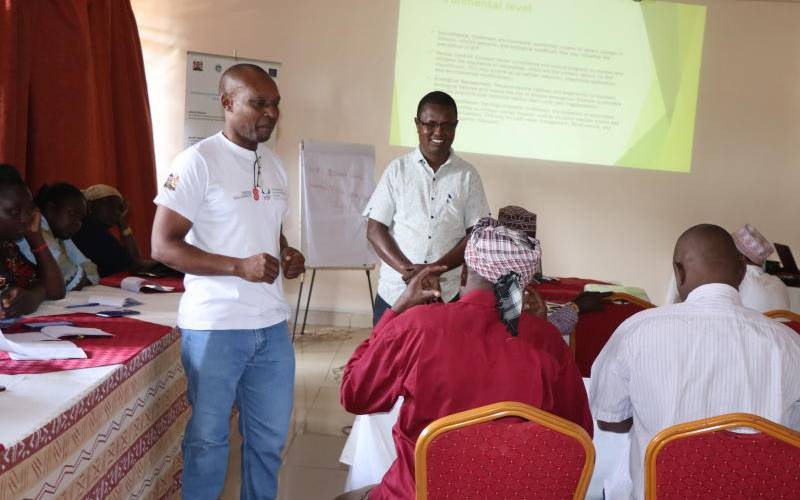The country is receiving above average rains in virtually all regions. Moisture and a little heat create conditions that support a flare-up of disease spreading vector populations.
As a farmer, expect more ticks, mosquitoes, ticks, tsetse flies and house flies and other biting flies. Subsequently, livestock diseases will be on the rise. The good news is there are measures that can be put in place to reduce the risk of disease outbreaks.
The Ministries of Health and the Director of Veterinary Services have already issued alerts on Rift Valley Fever (RVF). The alert included measures the government has put in place and what farmers can do to prevent the outbreak or how to control it. Rift Valley Fever is a viral fatal disease of animals and human beings. Because it affects man and animals its negative economic effects are great a reason the government has put out an alert and sensitised the public on what needs to be done to reduce these effects. Today I will enlighten you more on this disease.
The main challenge
Rift Valley Fever affects sheep, goat, cattle, camels and human beings. Sheep and calves are considered most susceptible species You may assume the disease occurs only in Rift Valley due to its name; but it can occur in any part of the country and has been reported in other continents.
The disease is spread through mosquito bites in livestock. Affected sheep will have massive abortions and deaths of young stock (calves, kids and lambs). Other symptoms include fever, foul smelling bloody diarrhoea and lack of appetite. In human beings, Rift Valley Fever presents with fever, headache, weakness, nausea, stomach discomfort, headache and can result in death. If you experience these symptoms and previously had contact with sick animals, seek medical attention at the nearest hospital immediately and tell the medical personnel of your previous contact. With appropriate and timely treatment the disease can be cured. In the previous outbreaks, the country lost vets who got infected while treating livestock infected with RVF.
The disease is transmitted from animals to human beings through contact with body fluids of infected animals. Contact with these fluids and tissue occurs during slaughtering and when farmers and vets assist their animals to give birth or during disposal of afterbirths without proper wearing persona, protection equipment.Risk populations for RVF are veterinary doctors, animal health assistants, slaughterhouse workers and farmers.
How to stay safe
During and after these rains, farmers should report any abortions in their stock to nearest veterinary authorities. When such abortions happen do not try to assist the animals or touch the abortuses with bare hands. Veterinary doctors and other animal health professionals are best placed to handle such animals. To show how serious this issue is, already refresher trainings are ongoing on RVF management across the country.
To stay safe, the public should be cautious when buying meat. Make sure it is inspected and bears the certification stamp. Do not eat meat from home slaughters because farmers may be tempted to sell meat from suspected RVF animals and this can easily lead to spread of disease from animals to man.
The nature of most of our livestock rearing systems may not allow for reduced contact with biting mosquitoes but where a farmer practises zero grazing treated nets can be put around the dairy unit to minimise mosquito bites. In range systems, strategic vaccinations can be carried out. Your vet will advise on this as timing is key to effectiveness of vaccinations. Mass or stormy abortions during this period are a likely indicator of Rift Valley Fever and should be reported immediately to nearest veterinary authorities.
[The writer is vet of the year in 2016 and works with the Kenya Tsetse and Trypanosomiasis Eradication Council - [email protected]]
 The Standard Group Plc is a
multi-media organization with investments in media platforms spanning newspaper
print operations, television, radio broadcasting, digital and online services. The
Standard Group is recognized as a leading multi-media house in Kenya with a key
influence in matters of national and international interest.
The Standard Group Plc is a
multi-media organization with investments in media platforms spanning newspaper
print operations, television, radio broadcasting, digital and online services. The
Standard Group is recognized as a leading multi-media house in Kenya with a key
influence in matters of national and international interest.
 The Standard Group Plc is a
multi-media organization with investments in media platforms spanning newspaper
print operations, television, radio broadcasting, digital and online services. The
Standard Group is recognized as a leading multi-media house in Kenya with a key
influence in matters of national and international interest.
The Standard Group Plc is a
multi-media organization with investments in media platforms spanning newspaper
print operations, television, radio broadcasting, digital and online services. The
Standard Group is recognized as a leading multi-media house in Kenya with a key
influence in matters of national and international interest.








